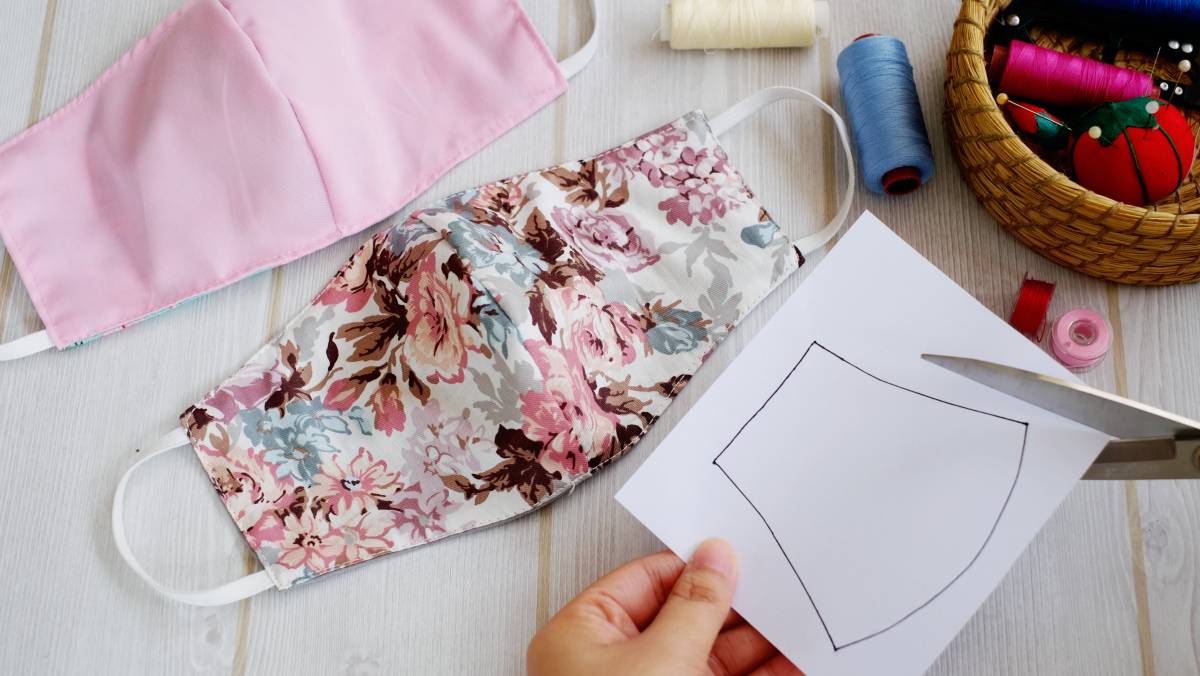- Home/
- Comparisons/
- Seamstress/
- Seamstress vs Tailor

Seamstress vs tailor: Who's right for you?
Comparing seamstresses and tailors based on their training and expertise, scope of work, specialisation, and more.
Hire a seamstress or a tailorLast Updated on

Written by Cielo B.
Staff Writer
Read more about our contributor
Key Facts
- A seamstress is skilled in garment construction and alteration, offering services ranging from simple repairs to custom garments and soft furnishings.
- A tailor is a professional who creates and alters formal, structured garments like suits and coats, as well as made-to-measure and bespoke clothing.
Doesn’t it feel frustrating to find clothes that match your style but don’t fit? You could shop again and look for the right sizes, but this could be a waste of time and effort. A more viable option is to have them altered. You can ask tailors or seamstresses for alteration services, but remember that these professionals each have their own expertise.
Learn which services you need best in this seamstress vs tailor guide.
What is a seamstress?

A seamstress works on simple clothing repairs like adjusting sleeves and collars to more detailed projects like custom-fit gowns, dresses, and other formal wear. Some can even create home decor items such as curtains and drapes. Their services can also be more personalised, giving clients direct advice and suggestions when selecting fabrics and clothing designs.
If you try to Google the meaning of a seamstress online, the dictionaries will refer to it as a woman who sews. This is because, historically, many women worked in large garment factories to mass-produce clothes and textiles, making them versatile in garment construction and alteration.
But today, many seamstresses are no longer bound by gender, and anyone can now work as independent freelancers or own small shops or boutiques.
What is a tailor? 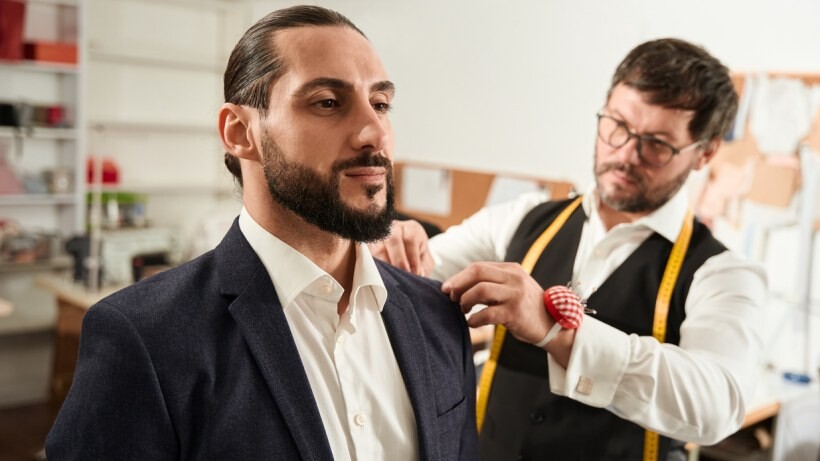
A tailor has similar responsibilities to seamstresses, including garment construction, repairs, and alterations. However, tailors focus more on achieving the perfect fit for their clients, so they usually perform multiple fittings for a more personalised clothing design. This doesn’t mean, though, that a tailor doesn’t make custom clothes. In fact, part of their main job is to create made-to-measure and bespoke clothing.
Moreover, a tailor creates and alters clothes with a more formal and structured design, such as suits and coats. Meanwhile, a seamstress makes less structured pieces or clothes with softer lines and flexible fit, like dresses, skirts, and blouses.
Seamstress vs tailor: Who should you choose for your clothing needs?
Knowing which services to avail between the two can be challenging with the overlapping responsibilities of a seamstress and a tailor. Here’s a more in-depth comparison guide covering the factors to help you better distinguish their key differences. By the end of it, you’ll know which one is more fitting for your needs.
In terms of training and expertise
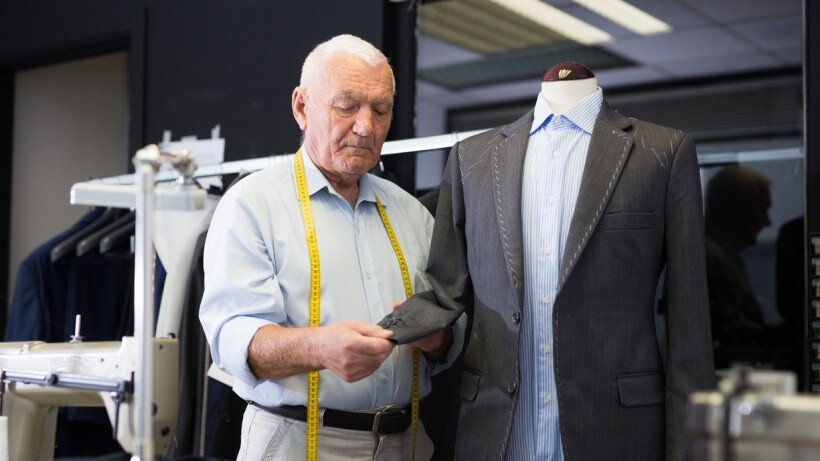
A tailor undergoes more formal training than a seamstress. They have to attend specialised tailoring schools and work under master tailors to gain expertise in advanced sewing techniques, fabric handling, and pattern drafting for formal bespoke garments like suits and jackets.
Client management is also one of the skills that tailors must learn because they would have to work in bespoke studios and high-end fashion houses. This way, they can guide their clients in fabric and design selection.
On the other hand, a seamstress has more informal training. They are usually self-taught, with some learning through online tutorials or from friends and family. Others attend vocational schools to learn about basic garment construction and fashion design.
Like tailors, seamstresses are proficient in hand-stitch and machine-sewing, but the expertise of a seamstress goes beyond the creation and alteration of a dress. They are also proficient in making home decor items like sofa covers, chair cushions, pillowcases, and more.
In terms of scope of work
Both tailors and seamstresses can repair, alter, and customise garments, but seamstresses have a broader scope of work than tailors.
Part of a seamstress’s work is creating garments from scratch, which involves taking measurements, cutting fabrics, sewing, and incorporating embellishments for the final touches.
Additionally, they can be dressmakers while providing an alterations service. If a dress is too big for you, they may adjust the seams for a more proper fit. You can also ask them to hem clothes to prevent the fabric from fraying easily.
Some seamstresses also make soft furnishings. To add warmth and comfort to the house, you may request them to make curtains, small decorative rugs, and throw blankets.
Although tailors also make garments and do alterations, their scope of work focuses more on custom clothing and adjustments, so improving the fit is their main priority. They repeatedly adjust clothing after multiple fittings to achieve the desired look and feel.
In terms of specialisation
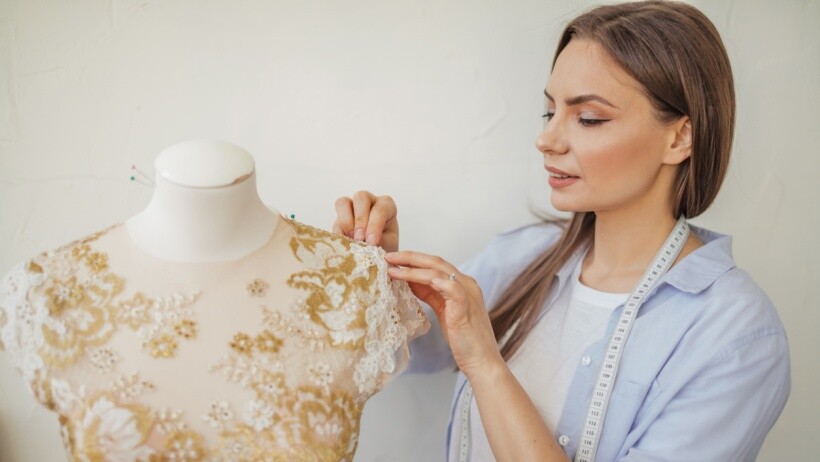
Since seamstresses have a broader scope of work, their specialisation also varies widely. They can become bridal seamstresses who create and alter wedding attires. Some TV and film studios also work with seamstresses, as some specialise in creating detailed costumes. You could even hire them for your cosplay costume needs if anime conventions are coming up.
Remember that seamstresses are upholsterers, too. Some can help repair and restore fabric and leather sofas. So, think twice about throwing away your old couch; a seamstress can just make a new cover for it.
Meanwhile, tailors specialise in bespoke tailoring. This includes formal wear like male and female-tailored suits or tuxedos, jackets, and formal dresses. Formal clothing is made from thick textiles, so its construction is more rigid and structured, requiring precise measurements. This is why many tailors focus on learning various fitting techniques and perform detailed alterations to improve the fit.
In terms of garment construction techniques
Although both seamstresses and tailors use various hand-stitching and machine-sewing techniques, tailors use more advanced garment construction techniques. For instance, tailors incorporate pad-stitching to lapels and collars. Pad-stitching is a detailed hand-finishing technique that involves sewing small, even stitches to give garments more shape and structure.
Some tailors would even use pick stitching when finishing hems or the edges of a garment. Pick stitches are small visible stitches at the edges of the lapel that add a decorative accent and reinforce the hem for a more durable finish. These little details matter to tailors for a more personalised touch.
Although seamstresses also use decorative techniques, they are merely for incorporating embellishments into garments. This includes adding beads and laces to enhance the appearance of a dress or shirt.
In terms of materials used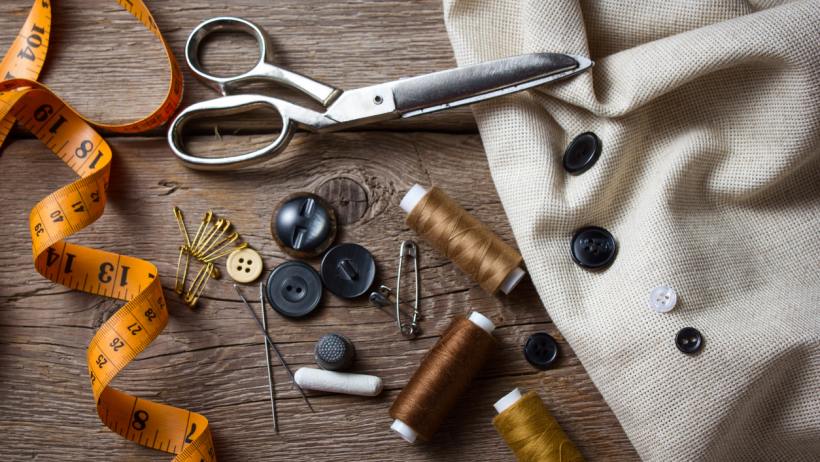
Both tailors and seamstresses use sewing machines for garment construction and alteration. However, when it comes to fabrics, tailors would use more luxurious options like silk and cashmere since their work is more focused on high-end bespoke garments and couture fashion.
Moreover, tailors aim for a more structured look, so they usually use a strong but flexible horsehair canvas to add shape to tailored garments. Pressing tools like Tailor’s hams, sleeve boards, and steam irons shape the garments.
Other materials include rayon, polyester, and silk, which can be used as fabric linings to help conceal the stitches and raw edges of a fabric.
Meanwhile, seamstresses use specialised materials depending on their expertise and specialisation. For instance, if a seamstress is an expert in bridal wear, they usually work with delicate fabrics like lace, chiffon, and organza. However, if their specialisation is more on upholstery, they use thick textiles like linen, wool, and leather.
In terms of service pricing
Tailoring services are more expensive than seamstress services due to tailors’ higher level of training and expertise. In the UK, the cost of tailoring services could be as high as £120 or more. This could increase for bespoke clothes since this service involves meticulous measurements and multiple fittings.
While skilled in alterations and repairs, seamstresses handle less complex tasks, which explains their lower service costs. For reference, the dress alteration cost in the UK ranges from £7 to £90. However, the service pricing for seamstresses can increase if the clothes have more intricate designs. Usually, they would have to use special fabrics and add beading and other embellishments, adding to the overall alteration costs.
Find a skilled seamstress or tailor to alter your favourite clothes: Post a task on Airtasker
Do you have a dress or top in your closet that doesn’t fit anymore, but you want to use it again? Instead of discarding or donating them, why not hire a seamstress or tailor to alter them? At Airtasker, you can find many sewing professionals by posting a task!
Learn more about our contributors

Written by Cielo B.
Staff Writer
Cielo is an experienced content writer who has explored various industries throughout her career. Her expertise, founded on a degree in journalism, includes writing about automotive and vehicle maintenance. She’s an avid car enthusiast who loves driving through lush rural areas with her old (but reliable) manual car. Cielo also covers topics like dressmaking, tailoring, and photography since she is a passionate cosplayer who enjoys dressing up as her beloved anime characters.
Seamstress vs tailor
| Seamstress | Tailor | |
| Training and Expertise |
Informal training; often self-taught or from vocational schools. Expert in basic garment construction and home decor items |
Formal training in tailoring schools. Skilled in advanced sewing, fabric handling, and pattern drafting |
Scope of Work |
Broader scope: creates garments, clothing alterations, and makes home decor items (sofa covers, curtains) |
Focuses on custom clothing and precise fit improvements |
| Specialisation |
Varies widely; bridal wear, costumes, and upholstery |
Specialises in bespoke tailoring |
Garment Construction Techniques |
Basic hand-stitching and machine-sewing; they know certain decorative techniques like adding beads and laces |
Advanced techniques like pad-stitching for lapels and pick stitching for hems |
| Materials Used |
Depends on specialisation: delicate fabrics for bridal wear, and thick textiles for upholstery |
Luxurious fabrics like silk and cashmere; also use rayon, polyester, and silk for linings |
| Service Pricing |
Lower cost: £7 to £90 for dress alterations. Prices can increase with intricate designs and special fabrics |
Higher cost: £7 to £120 for alterations. More expensive for bespoke tailored clothes |
FAQs on seamstresses and tailors
Tailoring specialises in crafting custom-fitted formal attire such as suits, jackets, and trousers, whereas dressmaking focuses more on creating dresses, blouses, skirts, and other women's clothing.
Tailoring involves creating custom garments, requiring advanced sewing skills, whereas alterations involve a tailor or seamstress adjusting and modifying existing clothing to ensure a proper fit.
Yes, most seamstresses do their best to alter almost any type of dress. Their alteration services cover basic size adjustments to more complex modifications, such as adding linings to see-through dresses and creating a new neckline.
In the UK, shortening a dress can cost from £10 to £30. However, the cost can vary greatly, depending on factors, like the location of the alteration services and the experience of a tailor or seamstress. For instance, alteration services are much cheaper in rural areas than in cities. Or if the sewist works for a popular brand or has a renowned reputation, a simple dress alteration could cost more.
Find seamstresses, fast
Post a task
Related articles


